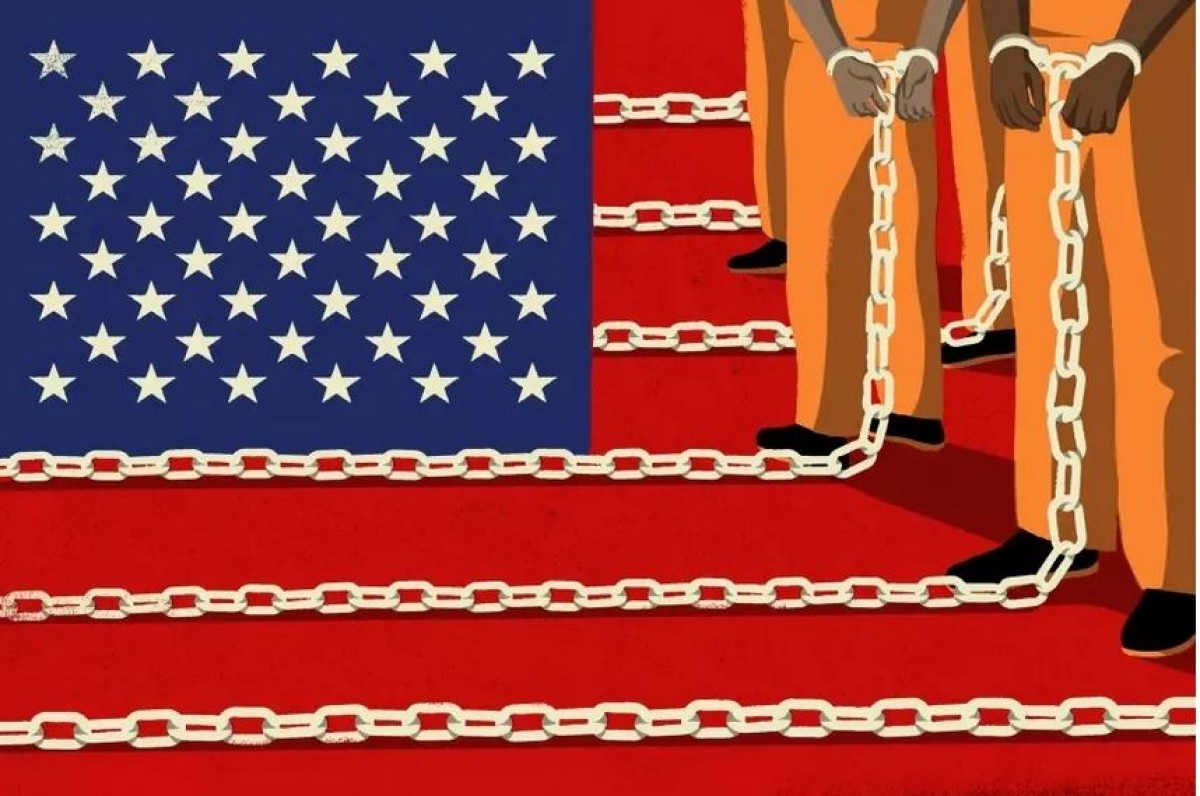 1347
1347
Addressing the United States' Mass Incarceration Crisis
Addressing the United States' Mass Incarceration Crisis
By Pazooki
The United States has been dealing with a huge imprisonment epidemic for several decades. Individuals, families, communities, and society as a whole are all affected by this complicated subject. To completely realize the scale of this catastrophe, it is necessary to investigate its underlying causes, comprehend its influence on diverse stakeholders, and investigate alternative remedies.
The U.S. has hundreds of federal, state, municipal, and tribal correctional institutions holding almost 2 million inmates. Many people are impoverished, mentally sick, or addicted due to these systems. In 2021, 421,000 individuals went to prison roughly 7 million times. Only 87,500 (on any given day) have been convicted, and at least 1 in 4 who go to jail will be arrested again within a year. Fifty years ago, the United States embarked on a path of mass incarceration that has led to a staggering increase in the prison population. There are currently approximately 2 million people locked up in prisons and jails across the United States, the majority of whom are people of African American descent. Since 1973, when the United States first started to see a significant rise in its prison population, the number of people incarcerated has increased by a factor of 500. There is no evidence that could possibly justify the enormous social, moral, and financial costs connected with decades-long investments in mass incarceration on a huge scale. This practise has been going on for decades. The majority of the rise in the need for correctional supervision may be attributed to misguided changes in sentencing legislation and policy rather than an increase in overall crime rates. People who are incarcerated, their families, and the larger community all suffer negative consequences as a result of mass incarceration, including negative effects on their physical health, their mental wellbeing, and their financial situation. Imprisonment leads to declining prospects for employment and results in lower earnings in the longer term. There is a correlation between having a past conviction and having a history of food insecurity, housing instability, and dependence on public assistance.
Ending the Mass Incarceration Crisis in America is the name of a public education campaign that is being launched this year by The Sentencing Project in collaboration with a coalition of advocates, professionals, and allies. The campaign promotes awareness about the precarious situation of the country's criminal justice system, the terrible effects of incarceration on communities and families, and the campaign also recommends more effective crime prevention techniques for our country.
The expression "life of their sentence plus one day" is the origin of the phrase "I have 20 years and a wake up," which is used by jailed persons to denote the length of their sentence plus one day (for example, "I have 20 years and a wake up"). It is also a cry for our nation to "wake up" to the harsh and deadly reality of mass imprisonment in the United States, serving as a double entendre in the process. Over five million people are under supervision by the criminal legal system. There are close to two million individuals locked up in prisons and jails around the country, the most of whom are people of African descent. At the beginning of the 1970s, this number stood at 360,000. Black men are six times as likely to be incarcerated as white men and Latinx men are 2.5 times as likely. One out of every 81 adult Black people living in the United States is now serving time in a state prison.
Beginning in 2010, the total number of persons serving time in prisons began a slight downward trend. In spite of this sluggish progress, it will take seventy-five years for the rate of decarceration to catch up to the levels of incarceration that existed before to the beginning of the mass incarceration.As of 2022, 4.6 million Americans were unable to vote due to state laws restricting voting rights for those with a felony conviction in their past. Children of colour and children of Latinx descent were disproportionately affected by the detrimental practises that led to the rise of mass imprisonment. More than 11,000 children and adolescents under the age of 18 were housed in detention facilities and correctional institutions during the peak year. To our great relief, this number has significantly decreased since that time; yet, there are no circumstances under which juveniles should be transferred to the adult criminal justice system.
The United States faces a severe mass incarceration crisis, deeply affecting individuals, families, and communities, particularly among African American and Latinx populations. Nearly 2 million people are incarcerated, overwhelming the correctional system and leading to inadequate conditions and rehabilitation programs. High recidivism rates, with 1 in 4 individuals re-arrested within a year, perpetuate a cycle of repeated offenses. This system imposes significant economic and social costs, diverting funds from essential services and leading to long-term economic hardships for formerly incarcerated individuals. Children of color suffer from disrupted family structures and a higher likelihood of entering the criminal justice system. Political disenfranchisement laws strip voting rights from millions, undermining democratic participation. Additionally, the system neglects the prevalent mental health and addiction issues among inmates, causing a public health crisis. Overall, the mass incarceration system entrenches racial and economic disparities, imposes severe human rights abuses, and incurs substantial societal and economic costs, crippling communities and undermining the nation's social fabric.
 1347
1347
Comment
Post a comment for this article